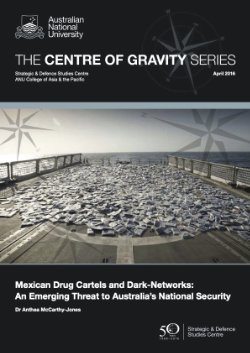Mexican Drug Cartels and Dark Networks: An Emerging Threat to Australia's National Security
By Anthea McCarthy
Over the past decade Mexican drug cartels’ power and the violent struggles between them have increased exponentially. Previously Mexico, and in particular the border regions with the US, were the key battle grounds for control of distribution routes. However, today Mexican drug cartels are now looking abroad in an attempt to extend their operations. This expansion has seen several cartels moving into lucrative international markets in Europe and the Asia Pacific.
It is in this context that Australia has now become a target of several Mexican cartels. They have already established linkages in the Asia Pacific and are further attempting to strengthen and expand these — with a particular focus on penetrating the Australian market. These developments show how Mexican drug cartels operate as ‘dark-networks’, successfully creating a global system that seeks to capture new markets, and further extend their control and dominance of the flow of illicit drugs around the world.
For Australia, the emergence of Mexican drug cartels in local markets presents not only criminal but strategic challenges. The size of these operations, their resources and ‘dark-network’ structure makes them a difficult opponent. Their presence threatens to not only increase the supply of illicit drugs in Australia, but encourage turf wars, increase the amount of guns in the country, tax border security resources and threaten the stability and good governance of South Pacific transit spots.
This represents the end of Australia’s ‘tyranny of distance’, which previously acted as a buffer and protected Australia from the interests of remote criminal groups such as the Mexican cartels.
Canberra: Australian National University, Strategic & Defence Studies Centre ANU College of Asia & the Pacific , 2016. 12p.


